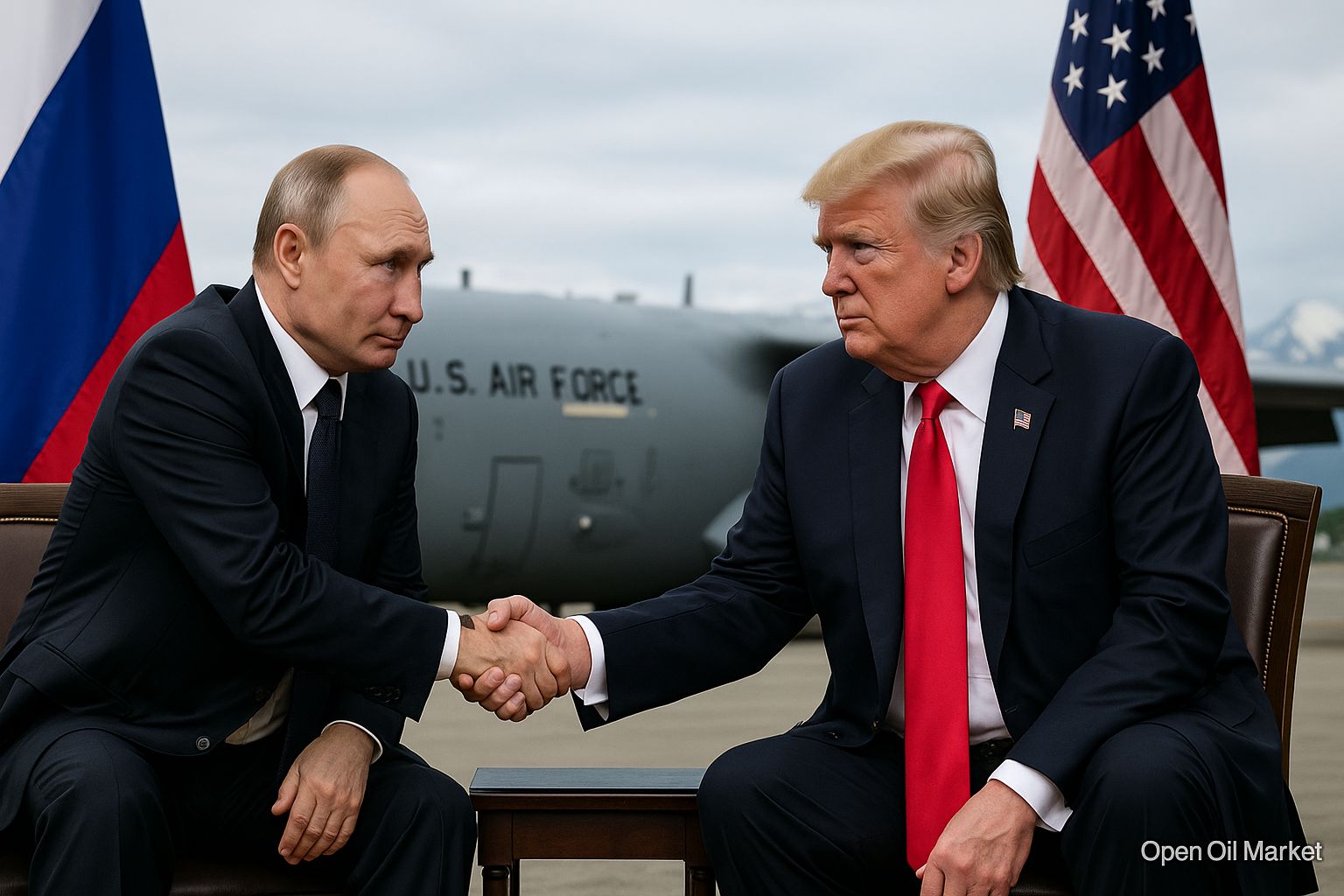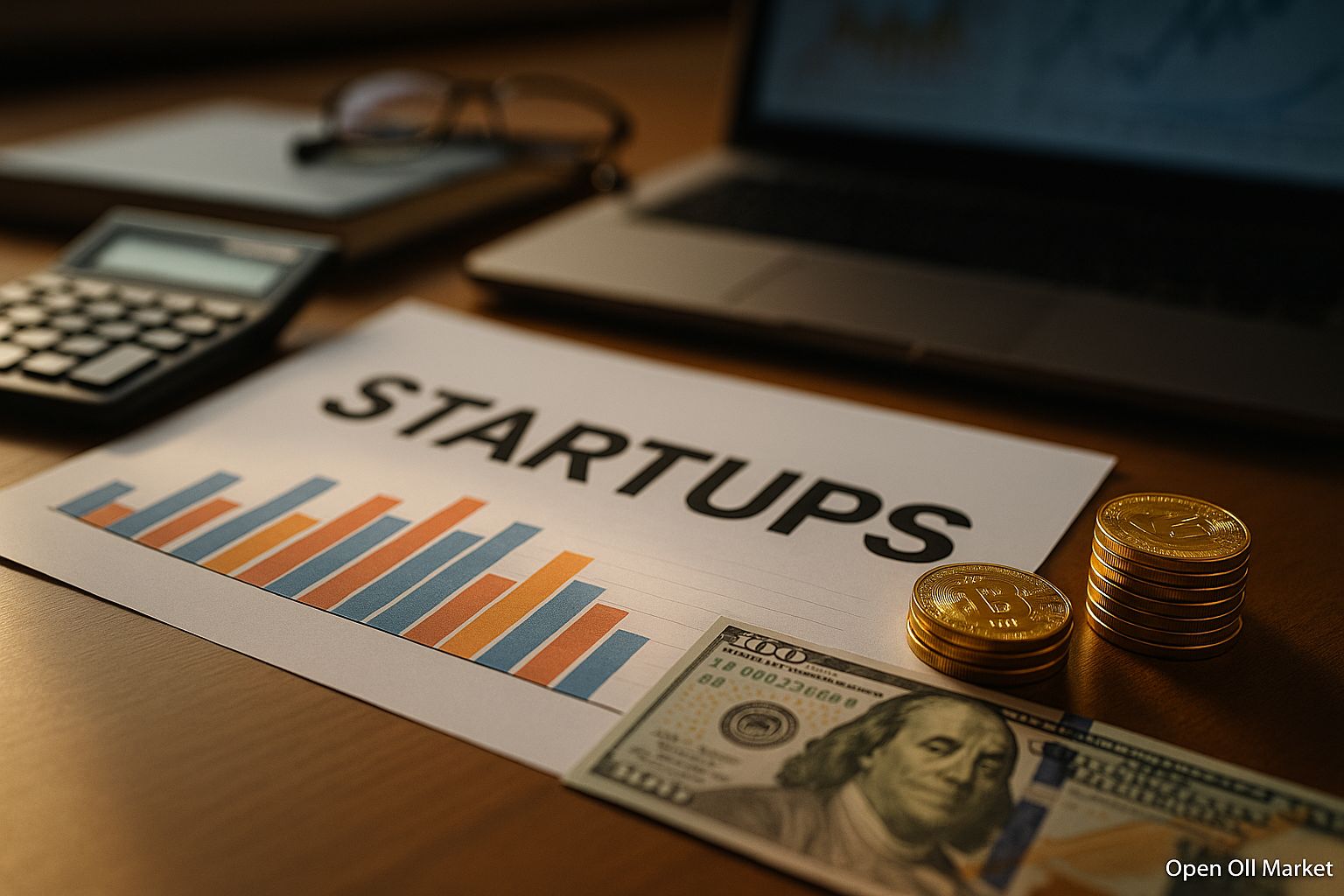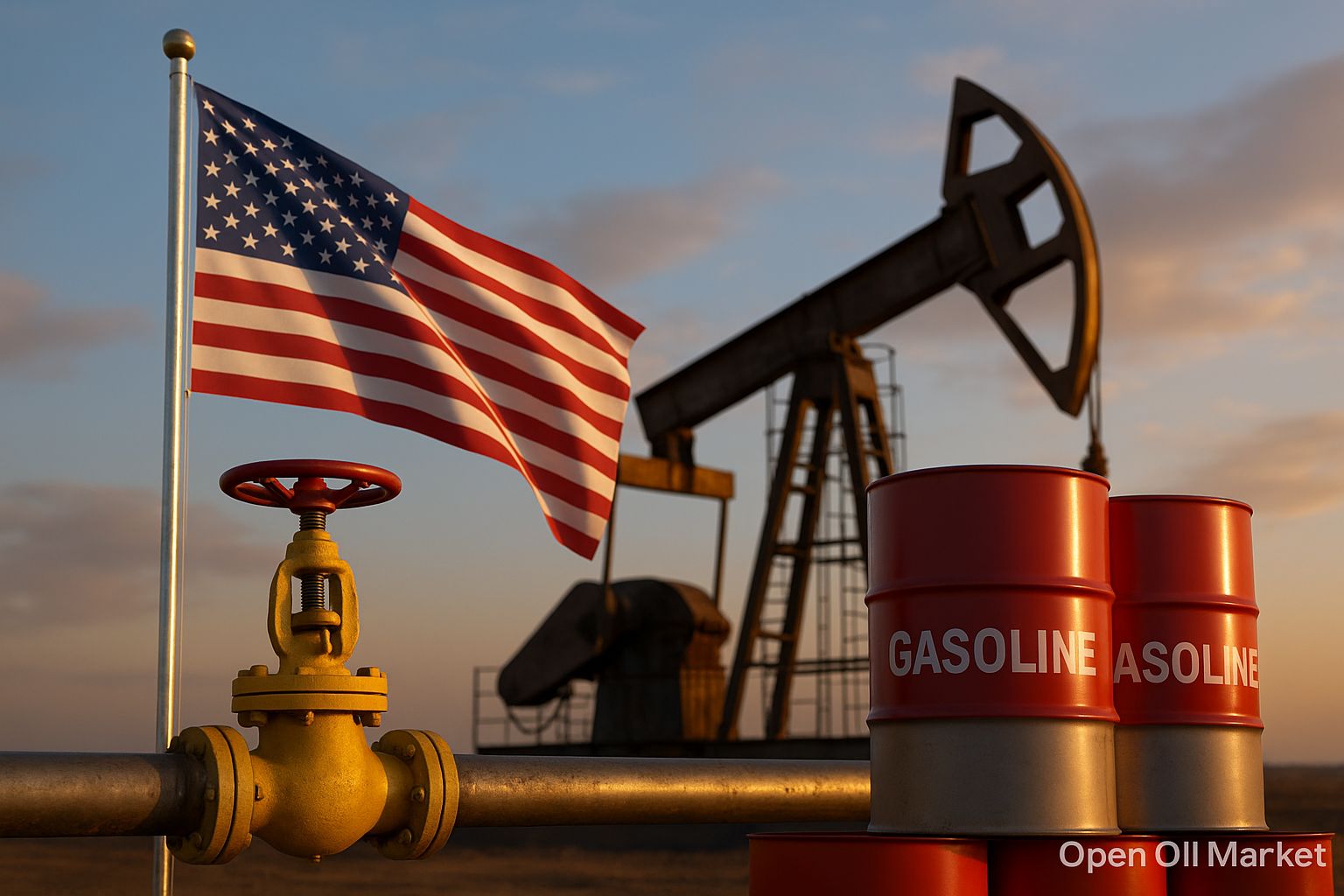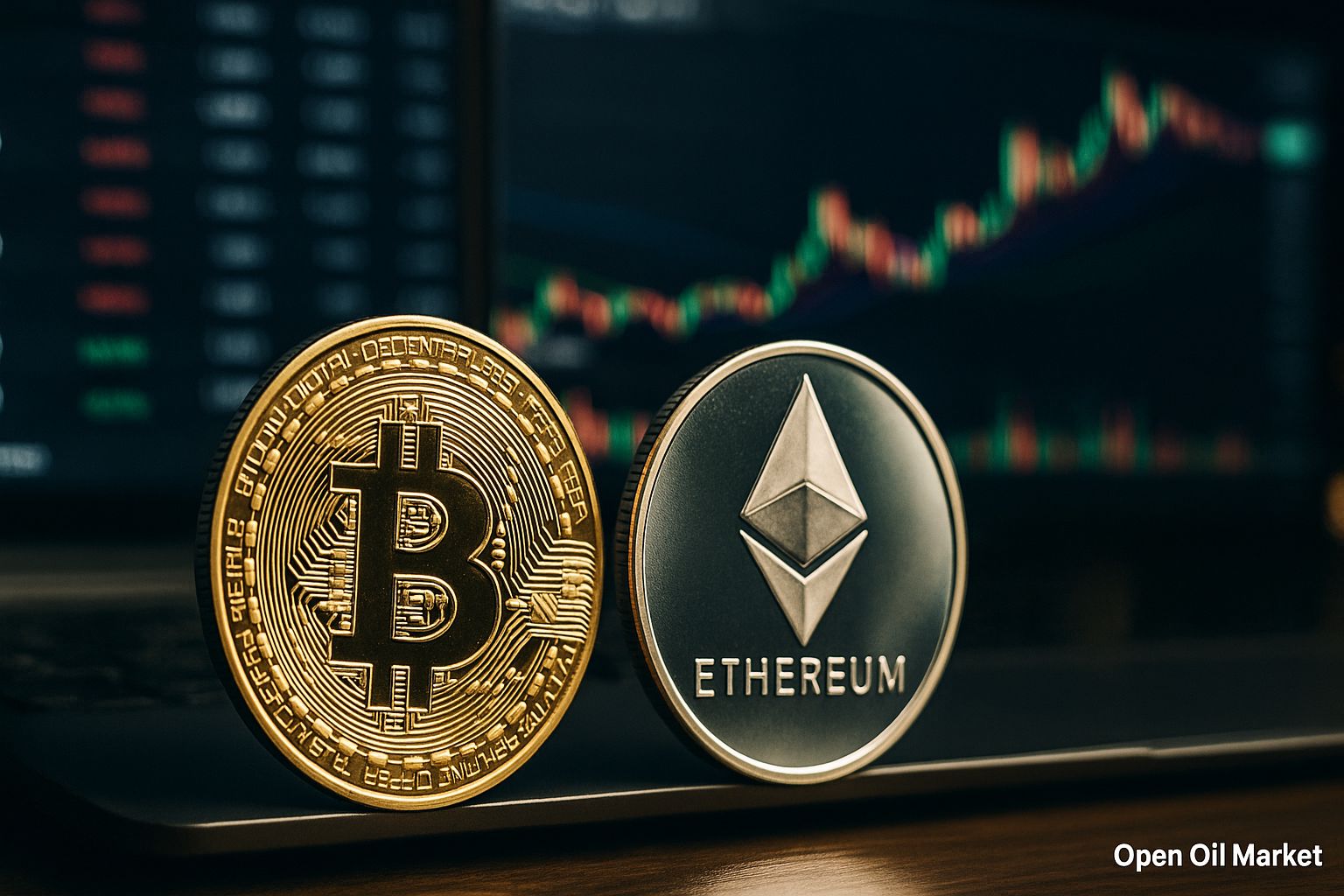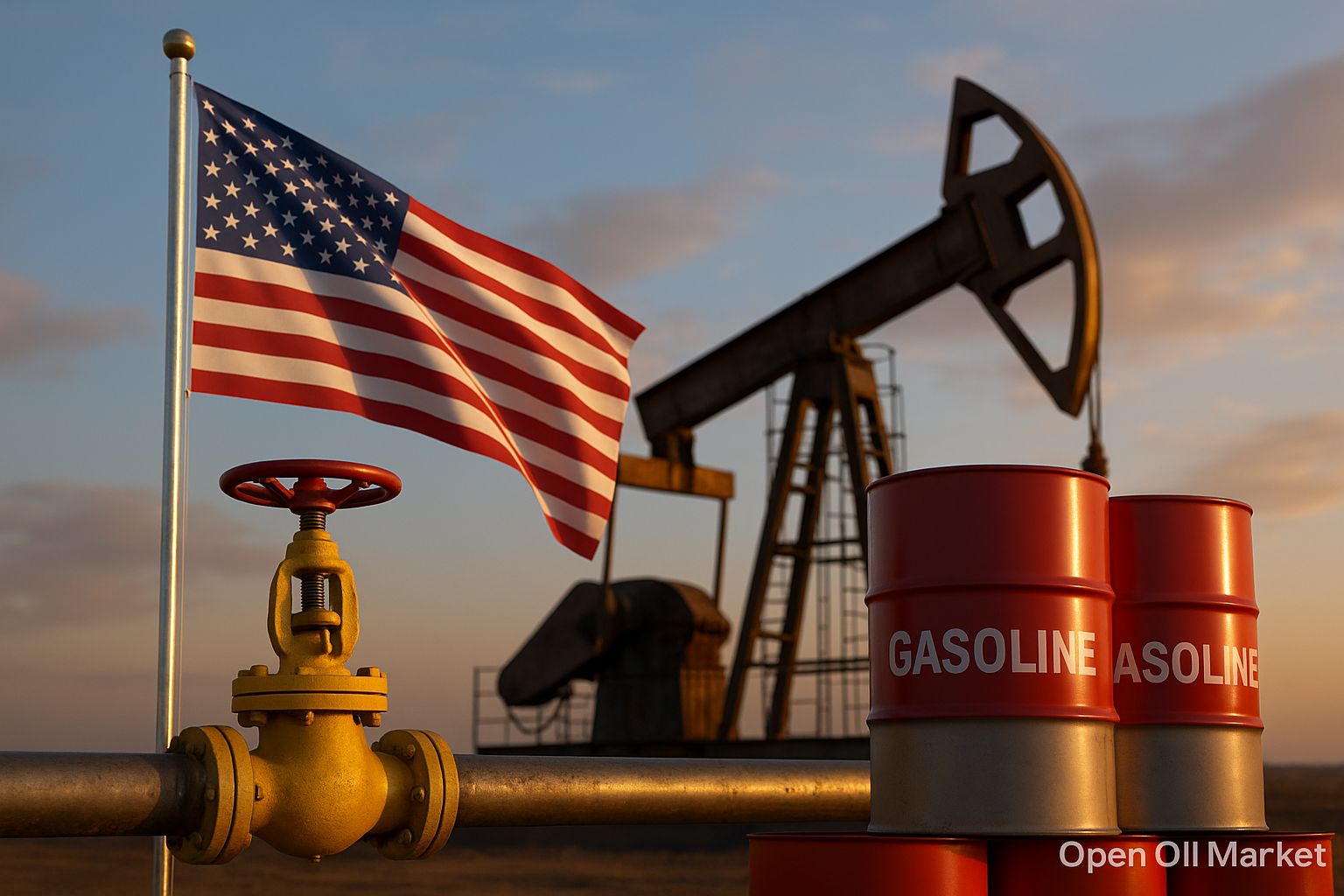
Current News in the Fuel and Energy Complex as of August 14, 2025: U.S. Sanctions Pressure on China, Expected Negotiations in Alaska, New Measures to Curb Gasoline Prices in Russia, Oil Market Conditions, Gas Storage Levels in Europe, Trends in Renewable Energy and Traditional Generation, Prospects for Investors
The recent developments in the fuel and energy complex (FEC) as of August 14, 2025, demonstrate contradictory trends. Geopolitical tensions remain high: Washington is intensifying sanctions pressure and hinting at measures against China following recent steps against India. At the same time, global oil prices are relatively stable at mid-$60 per barrel, reflecting a fragile balance between risks and OPEC+ efforts. In Russia, exchange prices for fuel are hitting new records despite an export ban and existing subsidies, prompting the government to prepare emergency measures to stabilize the domestic market. Meanwhile, Europe is rapidly filling gas storage facilities ahead of winter, relying on LNG inflows and alternative supply routes. Concurrently, the global energy transition is gaining momentum, although short-term needs are forcing some countries to temporarily revert to traditional hydrocarbons. Below is a detailed overview of key news and trends in the energy sector.
U.S. Tightens Sanctions Pressure: Targeting China After India
The United States and its allies continue to enhance sanctions pressure aimed at reducing Russia's revenue from energy exports. Following the decision of the Western coalition to lower the price cap on Russian oil from $60 to $47.6 per barrel (the new price cap will come into effect on September 3), the administration of President Donald Trump has adopted an even harsher rhetoric. Washington is tightening control over compliance with previously imposed restrictions and considering additional measures against buyers of Russian hydrocarbons. On August 6, the U.S. introduced a 25% surcharge on existing import duties for goods from India, resulting in the total tariff on Indian exports doubling to 50%. Now on the agenda are potential steps against China: U.S. Treasury officials are openly discussing the possibility of imposing 100% tariffs on all exports from China to the United States if Beijing does not reduce its purchases of Russian oil.
Strong signals from Washington are creating an atmosphere of uncertainty in the global energy resource market. Other countries are joining the sanctions campaign as well: for instance, Switzerland has synchronized its restrictions with the EU, lowering the price cap for Russian oil to $47.6 per barrel. Western traders and shipping companies have been warned about severe penalties for circumventing the imposed regulations. The new wave of sanctions and tariffs is forcing market participants to reevaluate supply logistics and incorporate potential barriers into their plans – from the complications of tanker insurance to the risk of shortages of certain grades of oil due to redirection of flows. Meanwhile, diplomatic efforts are emerging on the horizon: on August 15, Donald Trump and Vladimir Putin are scheduled to meet in Alaska to discuss the resolution of the conflict in Ukraine. Observers note that progress or failure in these negotiations could significantly impact both sanctions policy and sentiment in the oil market.
India Seeks Discounts, China Increases Purchases of Russian Raw Materials
The largest Asian importers of Russian oil are demonstrating determination to protect their interests and adapt to new conditions. India openly states that it cannot abruptly wean itself off supplies from Russia, which are vital for its energy security. Amid rising U.S. pressure, New Delhi has managed to secure additional preferences from Moscow: according to industry sources, Russian companies have agreed to increase the discount on Urals oil by approximately $5 per barrel compared to the indicative price of Brent to retain the Indian market. In fact, Russia has to offer even cheaper oil to India in order to maintain its stake in this key Asian segment. For New Delhi, such a concession is quite significant: according to calculations by the State Bank of India, a complete withdrawal from Russian imports would cost the economy about $9 billion in the current financial year and up to $12 billion in the next. Such a high price of sanctions "loyalty" is compelling Indian leadership to maintain cooperation with Moscow. In protest against external pressure, the Indian delegation even canceled a planned visit to Washington, where a major trade deal was expected to be concluded.
China, another key buyer of Russian energy resources, is also optimizing its import structure under the influence of new realities. According to the analytical company Energy Aspects, Chinese refineries have been requesting smaller volumes of oil from their traditional supplier, Saudi Arabia, as the availability of cheaper Russian raw materials increases. The rise in exports from Russia has allowed China to diversify supplies and secure more favorable pricing conditions, gradually sidelining Middle Eastern competitors. Thus, the sanctions standoff is indirectly leading to a redistribution of global oil flows: the share of Russian barrels in Asia is increasing while Middle Eastern producers risk facing a contraction in their markets. If the U.S. follows through on its threats of harsh tariffs against China, Beijing will likely retaliate – from diplomatic protests to the active use of alternative currencies and insurance mechanisms in transactions for energy resources, aiming to reduce dependence on the Western financial system.
Oil Market: Fragile Stability Amid Uncertainty
Following recent fluctuations, global oil prices have stabilized within a relatively narrow range. By mid-August, the benchmark Brent crude is trading around $66 per barrel, while the U.S. WTI is hovering around $64. There are no sharp price spikes, indicating a fragile equilibrium between supply and demand. The price dynamics are being influenced by contradictory factors, none of which have yet disrupted the market balance:
- Demand Support: Sustained fuel consumption in major economies is fueling the market. In the U.S., for instance, the summer driving season shows high gasoline demand, which contributes to a reduction in oil inventories and moderate optimism in the market.
- Geopolitical Risk: Washington's sanctions moves (including tariffs against India) paradoxically stimulate prices as traders factor in possible disruptions and the reallocation of oil flows in the event of escalating conflict.
- Constraining Factors: The proactive OPEC+ policy has already been factored into prices – the alliance is gradually increasing production, expanding supply. Additionally, concerns about a global economic slowdown and weak demand in China are preventing prices from surging.
Many analysts expect that in the second half of the year, Brent will fluctuate in the $60–70 range per barrel if no new shocks occur. In these conditions, market participants are closely monitoring any statements and events. Any unexpected factor – from hurricanes in the Gulf of Mexico to progress or derailment in peace negotiations over Ukraine – could shift the fragile balance. Meanwhile, the relative stability of prices benefits refiners and consumers, providing businesses with a breather following the period of high volatility in recent years.
OPEC+ and Demand Prospects: Cautious Production Increases
OPEC+ countries are maintaining a course of gradual oil production increases, trying to avoid market imbalance. In early August, key participants in the agreement (Saudi Arabia, Russia, UAE, etc.) confirmed a planned increase in the total production quota by 547,000 barrels per day starting in September 2025, effectively ending the remaining voluntary restrictions that have been in place since 2023. The market reacted calmly to these steps, as they were expected and already factored into price forecasts. The alliance is demonstrating unity and readiness to adjust production levels again if necessary: on September 7, during the ministerial monitoring committee meeting, OPEC+ ministers will assess the situation and discuss the future of the remaining cuts (1.65 million b/d, formally extended until the end of 2026).
At the same time, OPEC's latest monthly report instills confidence in demand resilience. Key points from the new forecast include:
- Global Economy is projected to grow by 3% in 2025 (upgraded from the previous forecast of 2.9%), creating a foundation for stable energy consumption.
- Global Oil Demand in 2025 is expected to increase by approximately 1.29 million barrels per day (forecast unchanged), while in 2026, demand growth has been raised to 1.38 million barrels per day.
- OPEC+ Production in July increased by approximately 329,000 b/d. Despite the overall increase, the actual volume came in slightly below the plan (a shortfall of about 47,000 b/d) due to voluntary restrictions by certain participants.
- Russia raised production by 98,000 b/d in July and even exceeded its official quota by approximately 17,000 b/d, demonstrating its intention to maintain export volumes.
Overall, OPEC holds a positive view on the situation: the improvement in the global economy forecast and the retention of moderate demand growth indicate that energy consumption will continue to set records, regardless of price factors. Meanwhile, OPEC+ is striving to maintain a fragile balance: the gradual increase in production is designed to avoid both shortages and market oversupply. Additional barrels are entering the market amid ongoing geopolitical risks, so their price influence remains limited for now. Experts expect that OPEC+ will continue to flexibly manage quotas, particularly if external factors (sanctions, recession, emergencies) significantly impact the oil market.
Russian Oil Products Market: Record Gasoline Prices and Government Response
The internal fuel market in Russia is facing unprecedented price increases despite previously adopted measures. Since the end of July, a full ban on the export of gasoline and several other oil products has been in effect (tentatively until August 31) – this emergency measure aims to channel maximum fuel volumes to the domestic market and temper wholesale prices. However, the effect has been limited so far: exchange prices for gasoline continue to break historical records. As of August 12, 2025, the price of gasoline AI-95 at the St. Petersburg International Commodity and Raw Materials Exchange reached around 80,500 rubles per ton – a new record. Gasoline AI-92 has approached 70,500 rubles per ton, matching the two-year peak. By contrast, at the beginning of the year, exchange prices were almost half of that, with gasoline prices rising by more than 30% over the summer months.
Retail prices at gas station pumps are also climbing, albeit at a more moderate pace. According to industry associations, the average price of AI-92 in Moscow has exceeded 59 rubles per liter, while AI-95 is around 65–66 rubles/liter, which is 10–12% higher than the levels at the beginning of the year (for comparison, overall inflation in Russia since the beginning of the year has been around 8%). The rapid rise in wholesale prices has already begun to impact the margins of independent gas stations: experts note that, when selling a liter of gasoline, some gas station operators are now even incurring losses, as retail prices are administratively restrained and lag behind exchange prices.
The Russian government is gearing up for urgent actions to stabilize the situation. Deputy Prime Minister Alexander Novak has called for a special meeting on August 14 with the leadership of major oil companies to discuss measures to curb fuel prices – additional support measures for the market are expected to be discussed. Among the steps being considered are:
- Increasing the mandatory sale quotas for gasoline and diesel on the exchange from the current 15% to 17% of production volumes, to increase supply in the domestic market and reduce speculative price increases.
- Adjusting the damping mechanism for subsidizing refineries – in case of further unfavorable price developments, authorities may allow a temporary change in the formula or suspension of payments to reduce the burden on the budget and encourage oil companies to keep prices down.
At the same time, officials assure that there are no risks of a fuel shortage in the country – wholesale stocks of oil products are sufficient, and refineries continue to operate. Experts note that the current price surge is caused by a combination of factors, including seasonal demand increases (summer transportation, agricultural activities) and external conditions. Infrastructure incidents have also contributed; increased drone attacks on some refineries have necessitated unplanned repairs, temporarily reducing oil product output.
Comment: “However, one of the indicators suggests a temporary reduction in oil product output: according to S&P Global Platts, maritime exports from Russia fell from 2.36 million barrels per day in June 2025 to 2.10 million b/d in July. The July figure was the lowest in the past 12 months, even though the ban on gasoline exports only came into effect at the beginning of August,” noted Sergey Tereshkin in a comment to Forbes.
As a result, the market balance is still disrupted. Authorities and industry participants need to find a delicate compromise between the necessity to hold down prices for consumers and maintaining the profitability of oil companies. The outcomes of the upcoming meeting will determine future policy: it is expected that a combination of market mechanisms (increasing fuel supply) and government tools (subsidies, tax maneuvers) will gradually help to alleviate the situation in the fuel market.
Gas Sector: Europe Accelerates Storage Filling Ahead of Winter
The European gas market is entering autumn well-prepared. EU countries are actively accumulating gas reserves, aiming to ensure energy security ahead of the upcoming winter. As of mid-August, underground gas storage facilities in the EU are nearly three-quarters full – significantly above seasonal average levels from previous years. According to the Gas Infrastructure Europe association, total reserves exceeded 77 billion cubic meters (over 72% of capacity) as early as August 10 and continue to rise. European importers injected over 40 billion cubic meters of gas during the summer months, confidently moving towards the target storage filling rate of 90% by November 1. The current injection rates indicate a high likelihood of achieving – and possibly exceeding – planned reserves ahead of schedule.
The high gas volumes in storage and stable inflows of liquefied natural gas (LNG) through terminals are maintaining a relatively calm pricing situation. Summer prices at the key European hub TTF are holding in the range of $330–360 per thousand cubic meters, which is several times lower than the peaks of the 2022 crisis. Following the adjustments in import routes, Europe has significantly reduced its dependence on pipeline gas from the Russian Federation: since January 2025, transit through Ukraine has been completely halted (after the contract with Gazprom ended), and northern supply channels are also non-operational (the Nord Stream pipeline is out of service, and transit through the Yamal-Europe pipeline has been stopped due to sanctions). In these conditions, the main volume of Russian gas is flowing into the EU only via the southern corridor – through the Turkish Stream and the Balkans – at around 50 million cubic meters per day, which constitutes only a small fraction of previous supply levels.
Europe has fully compensated for this gap with record LNG imports from other regions. LNG receiving terminals are operating at high capacity, accepting tankers from the U.S., Qatar, countries in Africa, and other exporters. For example, in July 2025 alone, around 11 billion cubic meters of LNG was imported into the EU – tens of percent more than a year earlier. Thanks to the diversification of sources and stockpiling, the European gas market is currently much better prepared for the winter period than it was two years ago. However, experts warn of ongoing risks: a harsh winter could sharply increase demand even with full storage facilities, and competition with Asian buyers for new batches of LNG may intensify if Asian economies strengthen their growth.
European regulators and energy companies continue to monitor the situation closely, ready to implement additional measures if necessary – from consumption restrictions to emergency fuel purchases. For now, the balance in the EU gas market appears relatively stable, and prices remain moderate, creating favorable conditions for the region's industry and energy sector on the eve of the heating season.
Energy Transition and Traditional Generation: Searching for Balance
The global trend towards the development of renewable energy (RE) continues to accelerate; however, short-term needs are compelling countries to maintain traditional generation. In 2024, the share of electricity generated in Europe from renewable sources (solar and wind power plants) exceeded that generated by coal and gas power stations for the first time. This landmark achievement in the energy transition confirms the effectiveness of multibillion-dollar investments in "green" energy. In the first half of 2025, electricity production based on fossil fuels in the EU fell by 17% compared to the same period last year, while production from solar and wind increased to historical highs. A similar trend is observed globally: capital investments in clean energy are growing at double-digit rates. According to the International Energy Agency (IEA), total investments in the global energy sector in 2025 will exceed $3 trillion, with more than half of this amount allocated to RE projects – from building solar parks to modernizing grids and energy storage systems.
Nonetheless, the realities of energy supply dictate the need to balance new and old technologies. High natural gas prices, weather factors, and periodic drops in renewable energy generation (for instance, on windless or cloudy days) are forcing authorities to revert to coal and traditional gas at times to avoid electricity shortages. In the U.S., after years of decline, the share of coal generation has increased again: in the early months of 2025, around 25% of electricity was generated by coal power plants—the highest figure in recent years. In several rapidly growing Asian economies (China, India, Vietnam, etc.), coal demand remains high as their energy systems are required to cover peak consumption periods. These facts underscore that the transition to clean energy is a gradual and complex process. In the coming years, the world will still heavily rely on oil, gas, and coal for reliable energy supply. Nonetheless, the long-term trajectory remains unchanged: each new year brings records in the introduction of RE capacities, increasing their share in the global energy balance, and moving closer to a carbon-neutral future.
Prospects for Investors and Market Participants in the FEC
The comprehensive picture of news from mid-August 2025 reflects the complexity and diversity of challenges in the FEC sector. Geopolitical factors – from the sanctions standoff between the U.S. and major Asian economies to changes in OPEC+ agreement conditions – are creating increased uncertainty for energy companies. Traders and resource producers must rapidly adapt to the new realities: realign export chains, factor potential tariff barriers and price regulations into budgets.
Simultaneously, fundamental market trends instill cautious optimism. After recent upheavals, global oil prices have stabilized at relatively comfortable levels for consumers, showing no sharp spikes – largely thanks to the coordinated actions of producers. The European Union is entering the winter period with record gas supplies, significantly reducing the risks of shortages and price shocks during the cold months. Moreover, investments are confidently flowing towards low-carbon energy, opening new niches for growth and innovation.
For investors in the fuel and energy complex, it is time to reassess risks and strategies. Traditional oil and gas projects face increasing challenges – their margins are shrinking under pressure from sanctions, export tariffs, and the need to subsidize domestic markets. However, new opportunities are emerging simultaneously: the energy transition is stimulating demand for energy storage technologies, renewable generation, infrastructure for hydrogen and electric transport. In the short term, market participants are focused on the development of the sanctions dispute between Washington and its largest Asian importers, the effectiveness of cooling measures in the fuel market in Russia, and further steps by OPEC+ and weather factors impacting gas demand.
Experts recommend maintaining maximum flexibility and diversifying assets. Companies that can timely adapt to changing conditions can not only minimize losses but also benefit from emerging trends – whether it be explosive growth in the RE sector or the recovery of hydrocarbon prices. In an environment of fragile balance in energy markets, the ability to respond quickly to external changes becomes the key to success for investors and businesses in the FEC.

